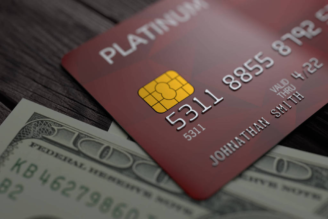How to choose the best credit card? Complete guide
Want to know how to choose the best credit card? Check out these amazing tips to help you find the ideal option!
Learn how to choose a good credit card option

If there’s one thing that can help or hinder your finances, it’s a credit card. Choosing the right one can guarantee you incredible benefits such as cashback, miles or discounts in stores. The wrong card, on the other hand, can be a trap, full of fees and high interest rates. That’s why choosing the best credit card for you is a fundamental step in keeping your financial life under control.
But with so many options in the United States, how do you decide? I’ll help you! In this guide, we’ll talk about the main factors to consider and how to choose the perfect card for you, without the hassle.
1. Understand your lifestyle and goals
Before you go around choosing the “most famous” card or the one with “millions of advantages”, ask yourself: what do I really need? The advantages of a card only make sense if they match your routine. Want an example?
- If you travel a lot, a card with miles is a good choice;
If you shop every month, a card with cashback may be more advantageous; - If your focus is on saving money, choose cards with no annual fee and lower rates.
The key here is to align the card with your lifestyle. If you don’t travel often, miles will accumulate unused. Those who spend a lot on the market, on the other hand, can earn a lot with cashback programs.
2. Compare interest rates (APR)
In the United States, one of the most important card fees is the APR (Annual Percentage Rate), which is the annual interest applied to the unpaid balance. If you often carry a balance on your card (i.e. you don’t pay the full bill every month), interest rates are critical.
Look for cards with low APR or options with reduced interest for the first few months, known as “0% introductory APR”. This is an excellent alternative if you have a large purchase planned.
Extra Tip: Check out platforms like NerdWallet that offer up-to-date card comparisons and show the best APR options.
3. Cashback cards
Who doesn’t love earning cash back on purchases? Cashback credit cards are ideal for those who spend a lot on a daily basis. It works like this: you receive a percentage of the amount you spend as a credit on your bill or money in your account.
There are cards that offer fixed cashback (e.g. 1.5% on all purchases) and others that vary according to category (3% in restaurants, 2% in supermarkets, and so on). Evaluate where you spend the most and choose one that maximizes your return.
4. Rewards and miles programs
If you’re someone who loves to travel, cards with reward programs can be a great choice. Many cards offer air miles or points to be redeemed for tickets, accommodation and travel upgrades.
Some premium cards, such as the Chase Sapphire Preferred® Card, offer generous welcome bonuses. For example, if you spend a specific amount in the first three months, you can earn thousands of points. Keep an eye on the conditions and see if the card is worth it for your travels.
5. Beware of hidden fees
It’s not all smooth sailing when it comes to credit cards. It’s important to consider some important points, especially when it comes to credit card fees. So keep an eye out for additional fees:
- Annual fee: some cards charge an annual fee for use. Assess whether the benefits outweigh the cost;
- Late payment fee: avoid paying your bill late so as not to incur abusive interest charges;
- International conversion fee: if you make purchases abroad, look for cards that don’t charge this fee.
Practical tip: choose cards with no annual fee if you don’t want sophisticated benefits. If the bonuses are really good, sometimes it’s worth paying an annual fee, as long as the return is worth it.
7. Your credit score matter
Speaking of credit scores, it’s worth remembering that the card you can get depends a lot on your credit score. Cards with the best benefits generally require a high score. But calm down: if your score isn’t that good, there are cards aimed at those starting out or rebuilding credit.
Tip: Pay your bills on time and keep your card usage below 30% of the limit. This will help increase your score over time.
Conclusion
Choosing the best credit card doesn’t have to be an impossible task. The key is to understand your needs, compare rates and focus on the benefits that will really make a difference to you.
Remember: a credit card should be a facilitator, not a problem. Use it wisely, take advantage of the benefits and keep control of your finances. Now, just choose your next card and start enjoying it!





